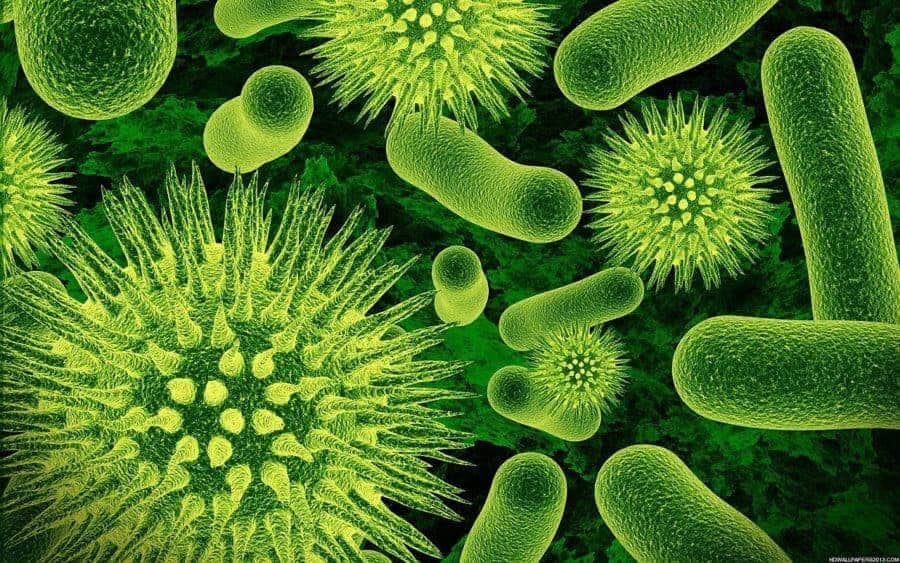Sponsored Post: Cold and flu season is quickly approaching, spreading the malaise of this season’s hottest viruses that are prone to knock the productivity right out of your office. But what does the life of a virus in your office look like? Aside from the general feeling of hatred that most (besides microbiologists), share for their microbial marauders, the life of a virus is an amazing feat of genetic reengineering that even the most sterile germophobe can appreciate.
Infancy: The Waiting Game
Viruses are commonly brought into the office by a coworker who spreads the virus from their own body by one of many methods, like sneezing or coughing, contaminating common work surfaces. Places like the odd angles of office bathroom or the crumb laden crevice between the keys of a keyboard are all prime places for a virus to wait to be picked up by a host organism.
Considering that these places are the most seldom cleaned by all but the most thorough commercial cleaning companies, viruses are able to patiently wait for the perfect unlucky keystroke or toilet flush that will allow them to attach to a host organism.
Adolescence: Infiltration
Now that the cold or flu virus has attached itself to the unlucky organism’s exterior, it isn’t long before it’s able to find a way into its labyrinthine insides; most commonly through mucus membranes, like the eyes, or through a main entry point like the nose or mouth. Once inside, the virus gets to work; beginning the process of viral entry.
Viral entry involves the virus finding a host cell and interacting with the proteins that make up the host cell’s surface, allowing it inside through attachment or adsorption. Both of these methods allow the virus to form a point of entry into the cell’s membrane, where the virus can dump its genetic material into the interior of the host cell. At this point, the host cell usually envelopes the virus, shielding it from detection by antibodies that are already out to destroy it.
Much like a burglar cutting a hole in glass to gain entry to the valuables inside a display case, the virus has made itself an entry point to get to the prize inside the host cell.
Adulthood: Replication
The virus, having dumped its necessary genetic material into the host cell, takes control of the cell’s replication mechanism and starts going crazy, churning out millions of copies of itself. Essentially, the virus has injected its genetic material into the cell and hijacked its reproductive process, turning it into an assembly line for copies of itself.
These copies swarm through the host organism’s body, avoiding white blood cells and other immune system countermeasures, to carry out the process all over again in the final stage of the original virus’s life cycle.
The Golden Years: Shedding
After the virus has exhausted the resources of the host cell, the cell usually dies. Think of the host cell as a grape being turned into a raisin, with the grape having been dried by an industrial heat lamp, as opposed to the gentle rays of the sun.
As the millions of viral copies produced by the host cell and original viral intruder flood the body, the process of shedding has occurred; the viral copies are free to roam the body in search of additional host cells to replicate their own genetic material and shed more of their progeny into the organism’s body.
The “sick” part of being sick is commonly associated with the body’s effort to fight and stem the tide of viral progeny that are working frantically to reproduce before they die or are eradicated by the host organism’s immune system. This is also a key stage for the virus’s successful continuation; as the viral replications attack the host’s body, they also exit the body through other mucus based methods, where they are able to make their way into the environment and the waiting game starts all over again; this time on the handle of the office microwave or a button on the hallway vending machine.
An Admirable Foe
While no one likes being sick, it’s hard to not appreciate the immense power of our microbial adversaries. Viruses have evolved over millions of years to become masters of sabotage, using a host’s body as the ultimate camouflage against its own defenses. The ability of a flu or cold virus to completely repurpose a host’s cell to its own purposes (smashing the copy button as fast as possible), is an amazing feat for a lifeform that requires a microscope to be seen.
Viruses are just one example of the amazing variety of life in the world or microorganisms; they just happen to make headlines because of their adverse effect on larger life forms. Speaking of, you should probably go disinfect the refrigerator door handle, and you might as well wipe down the sink while you’re at it.
Sources:

